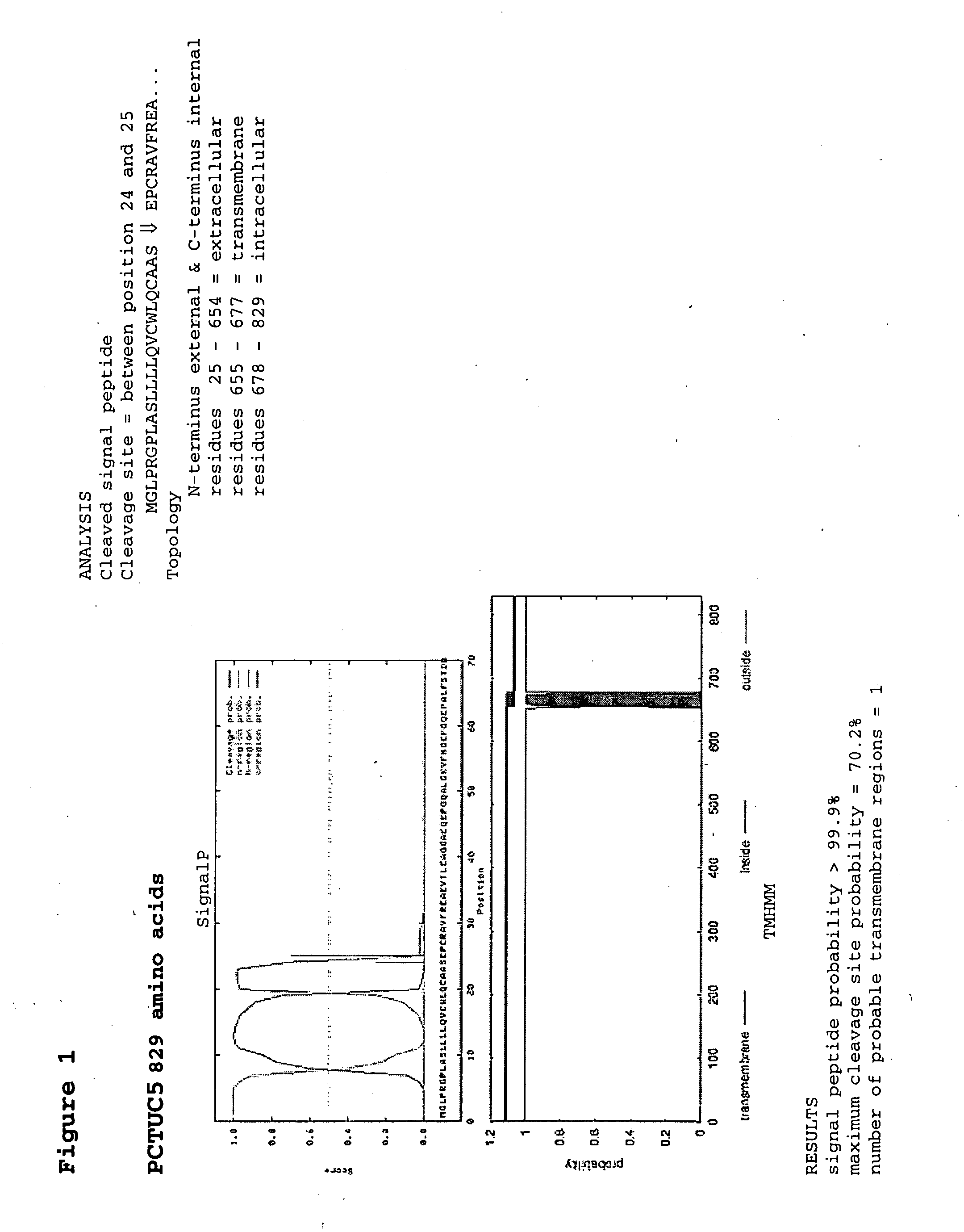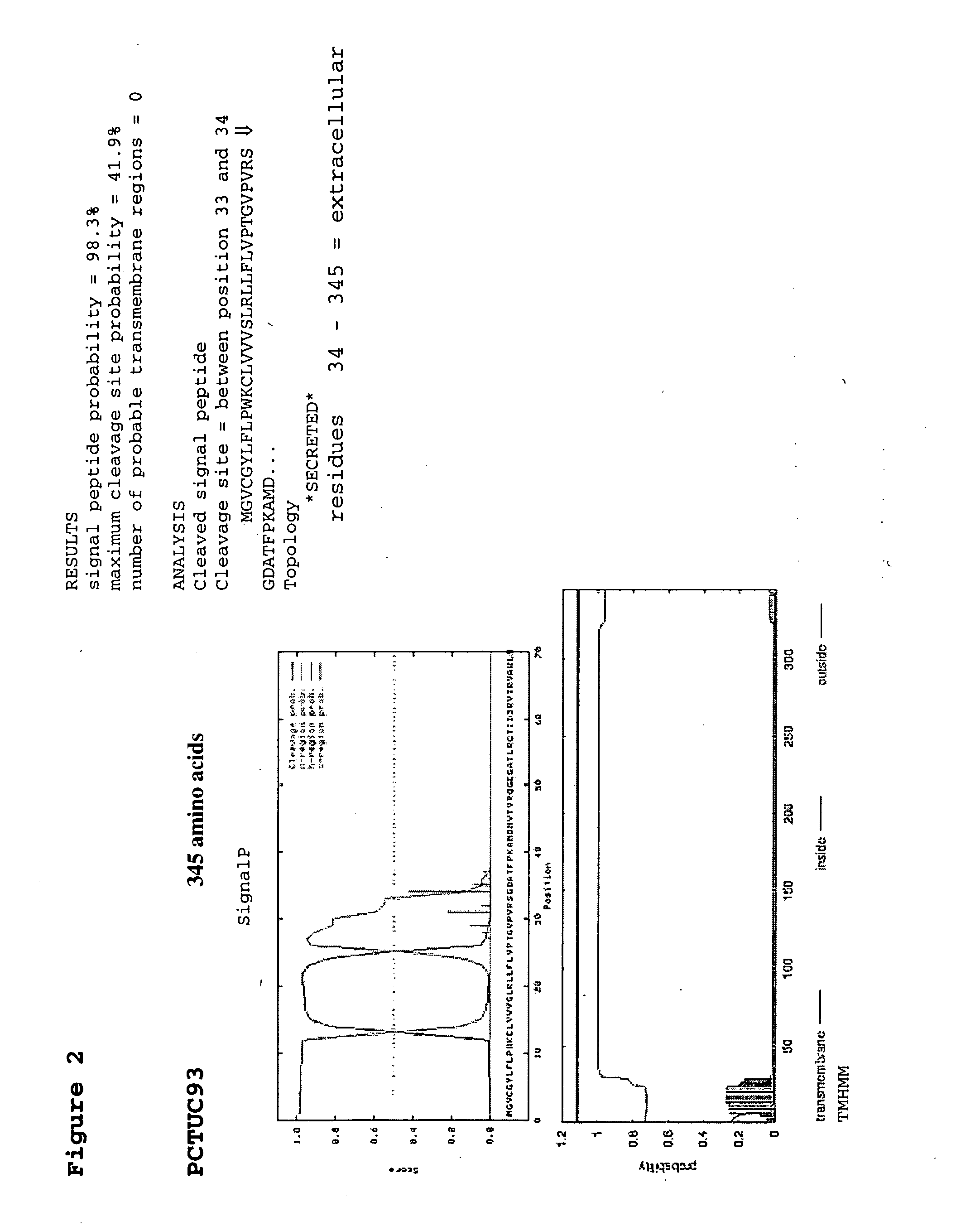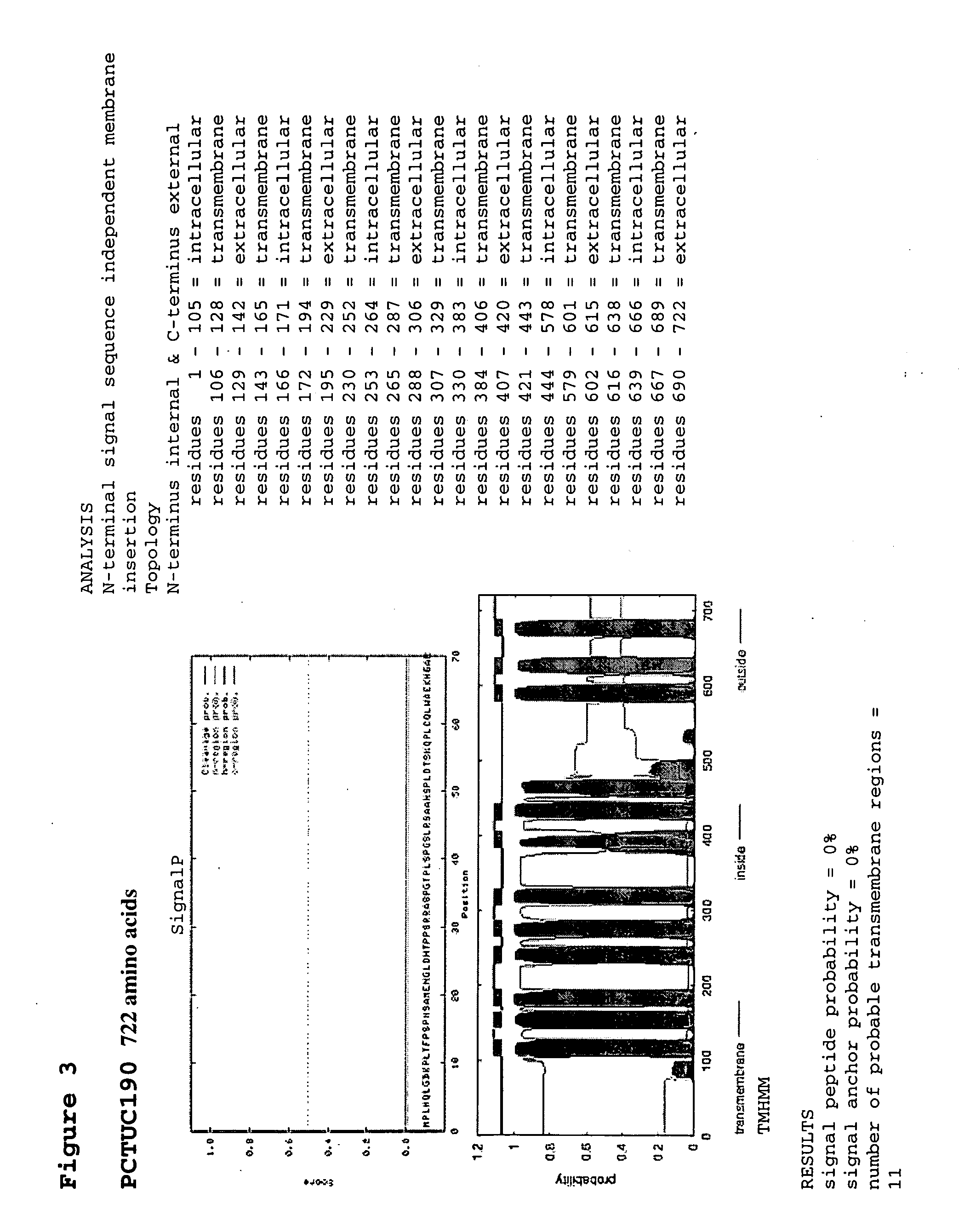Differentially expressed genes involved in cancer, the polypeptides encoded thereby, and methods of using the same
a cancer and differential expression technology, applied in the field of identification of nucleic acids and their encoded polypeptides, can solve the problems of incomplete understanding of the principle mechanisms underlying colon cancer, the breakdown of communication between neoplastic cells and their environment, and the inability to recognize nucleic acid sequences, so as to achieve the effect of increasing the expression of nucleic acid sequences
- Summary
- Abstract
- Description
- Claims
- Application Information
AI Technical Summary
Benefits of technology
Problems solved by technology
Method used
Image
Examples
example 1
[0658] Sample Preparation
[0659] Total RNA was isolated from 10 primary colon tumors and 10 normal colon samples using the Ambion Totally RNA kit for isolation of total cellular RNA, catalog number #1910, 2130 Woodward Street, Austin, Tex. 78744-1832. According to the protocol the samples were lysed in a guanidinium based lysis solution and were then extracted sequentially with a Phenol:Chloroform:IAA and Acid-Phenol:Chloroform. The RNA is then precipitated with isopropanol. Poly A+ RNA was extracted using the Oligotex mRNA midi kit, catalog number #70042, 28159 Avenue Stanford, Valencia, Calif., 91355. Using this kit the poly A+ RNA was purified by hybridizing the poly A+ tail to a dT oligomer coupled to a solid-phase matrix.
example 2
[0660] Probe Generation
[0661] Each polyA+ RNA sample was reverse transcribed using MMLV reverse-transcriptase, 0.05 μg / ul oligo-dT primer (21 mer), 1× first strand buffer, 0.03 units / ul RNase inhibitor, 500 uM dATP, 500 uM dGTP, 500 uM dTTP, 40 uM dCTP, 40 uM dCTP-Cy3 (BDS) or dCTP-Cy5 (Amersham Pharmacia Biotech). The reverse transcription reaction was performed in a 25 ml volume containing 200 ng polyA+ RNA with GEMBRIGHT kits. Specific control polyA+ RNAs (YCFR06, YCFR45, YCFR67, YCFR85, YCFR43, YCFR22, YCFR23, YCFR25, YCFR44, YCFR26) were synthesized by in vitro transcription from non-coding yeast genomic DNA (W. Lei, unpublished). As quantitative controls, the control mRNAs (YCFR06, YCFR45, YCFR67, YCFR85) at 0.002 ng, 0.02 ng, 0.2 ng, and 2 ng were diluted into reverse transcription reaction at ratios of 1:100,000, 1:10,000, 1:1000, 1:100 (w / w) to sample mRNA respectively. The control mRNAs (YCFR43, YCFR22, YCFR23, YCFR25, YCFR44, YCFR26) were diluted into reverse transcripti...
example 3
[0662] Hybridizaton
[0663] Hybridization reactions contained 9 μl of probe mixture consisting of 0.2 μg each of both Cy3 and Cy5 labeled cDNA synthesis products in 5×SSC, 0.2% SDS hybridization buffer. The probe mixture was heated to 65° C. for 5 minutes and was aliquoted onto the microarray surface and covered with an 1.8 cm2 coverslip. The arrays were transferred to a waterproof chamber having a cavity just slightly larger than a microscope slide. The chamber was kept at 100% humidity internally by the addition of 140 μl of 5×SSC in a corner of the chamber. The chamber containing the arrays was incubated for about 6.5 hours at 60° C. The arrays were washed for 10 min at 45° C. in high stringency wash buffer (1×SSC, 0.1% SDS), three times for 10 minutes each at 45° C. in low stringency wash buffer (0.1×SSC), and then dried.
PUM
 Login to View More
Login to View More Abstract
Description
Claims
Application Information
 Login to View More
Login to View More - R&D
- Intellectual Property
- Life Sciences
- Materials
- Tech Scout
- Unparalleled Data Quality
- Higher Quality Content
- 60% Fewer Hallucinations
Browse by: Latest US Patents, China's latest patents, Technical Efficacy Thesaurus, Application Domain, Technology Topic, Popular Technical Reports.
© 2025 PatSnap. All rights reserved.Legal|Privacy policy|Modern Slavery Act Transparency Statement|Sitemap|About US| Contact US: help@patsnap.com



